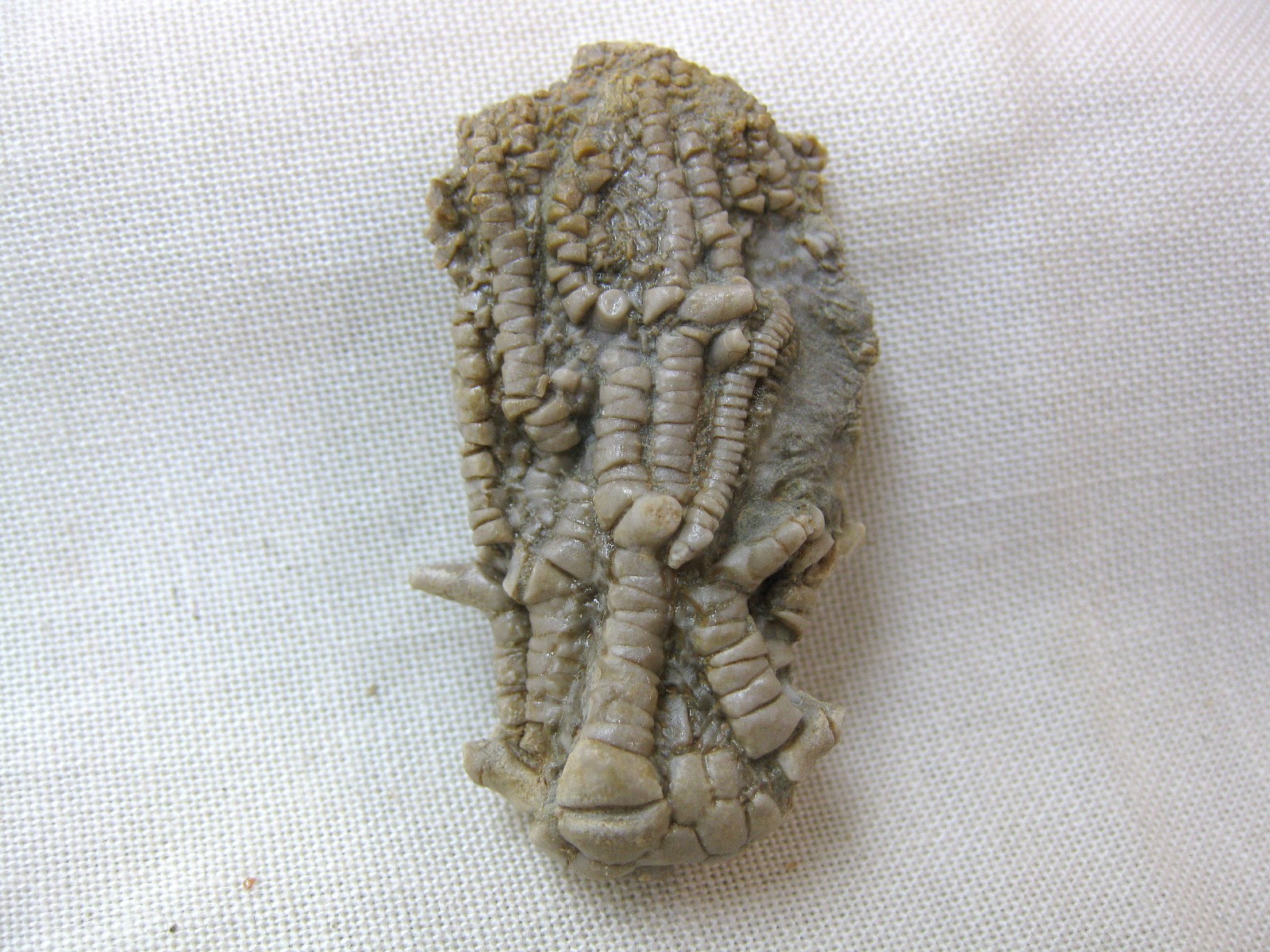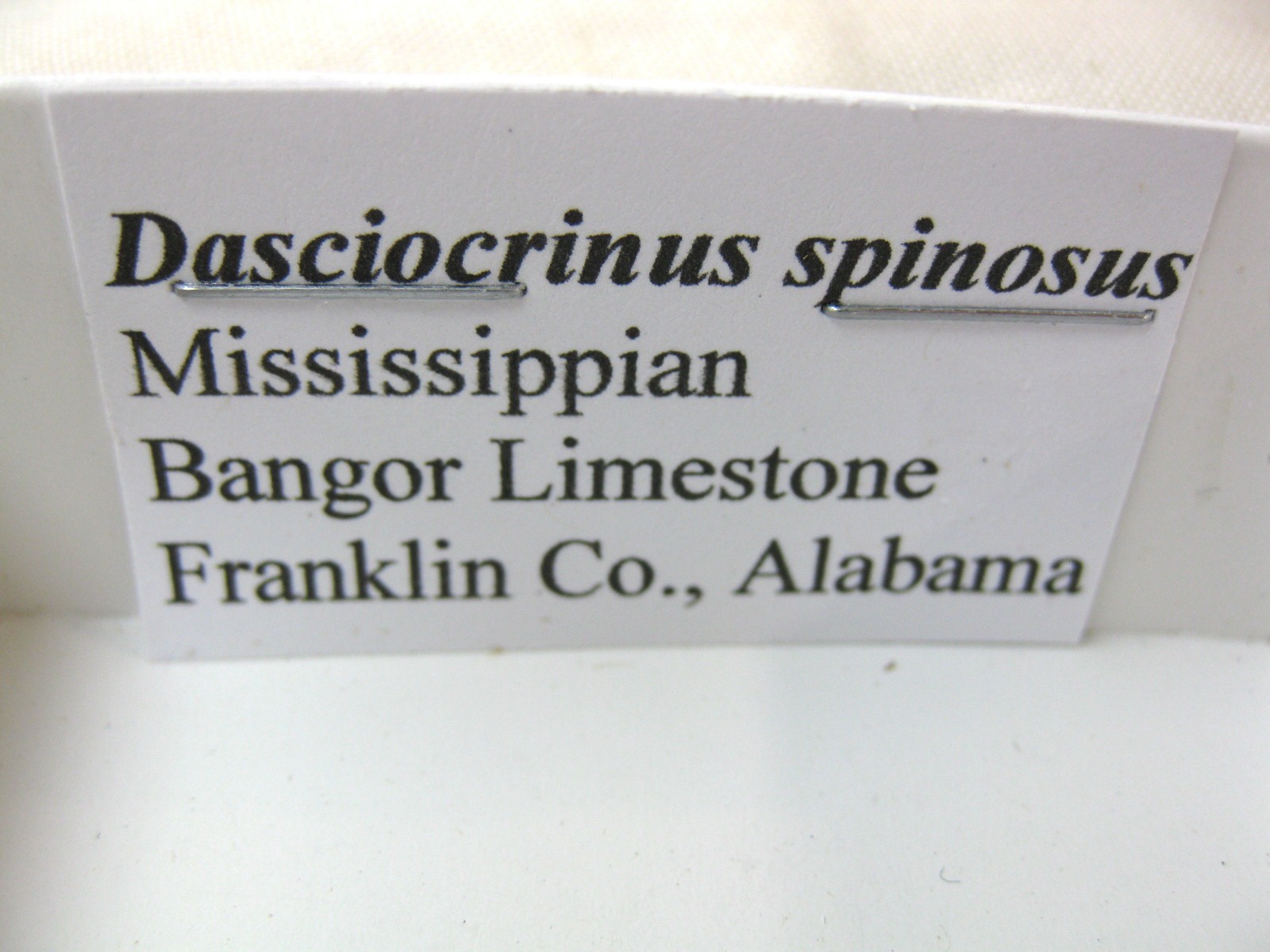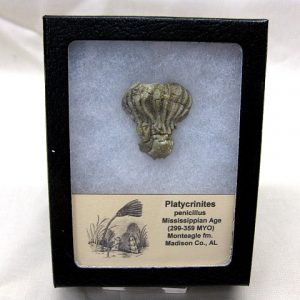Description
- SEE LABEL IN PHOTO FOR IDENTIFICATIONS
- Mississippian Age
- Bangor Limestone
- Franklin County, Alabama
- Specimen measures approx. 13/16″ x 1 1/2″
Crinoids are marine animals that make up the class Crinoidea of the echinoderms (phylum Echinodermata). The name comes from the Greek word krinon, “a lily”, and eidos, “form”. They live in both shallow water[5] and in depths as great as 9,000 meters (30,000 ft). Those crinoids which in their adult form are attached to the sea bottom by a stalk are commonly called sea lilies. The unstalked forms are called feather stars or comatulids.
Crinoids comprise three basic sections; the stem, the calyx, and the arms. The stem is composed of highly porous ossicles which are connected by ligamentary tissue. The calyx contains the crinoid’s digestive and reproductive organs, and the mouth is located at the top of the dorsal cup, while the anus is located peripheral to it. The arms display pentamerism or pentaradial symmetry and comprise smaller ossicles than the stem and are equipped with cilia which facilitate feeding by moving the organic media down the arm and into the mouth.






